Before we begin the review, I would like to extend my gratitude towards Happy Hen Toys for sending this figure along as a review sample. Check out their large selection of animal and dinosaur figures by clicking the banner below.
Guineafowl are Galliformes belonging to the family Numididae and are native to Africa. They’re among the oldest gallinaceous birds with a fossil record dating back to the Eocene. Like other Galliformes they’re primarily ground dwelling omnivores that mostly feed on seeds and insects. They’re also highly social but unlike most other Galliformes they tend to be monogamous, and mate for life. Today we’re looking at the Papo guineafowl. New for 2024 it is one of only three guineafowl figures and the only one currently in production.
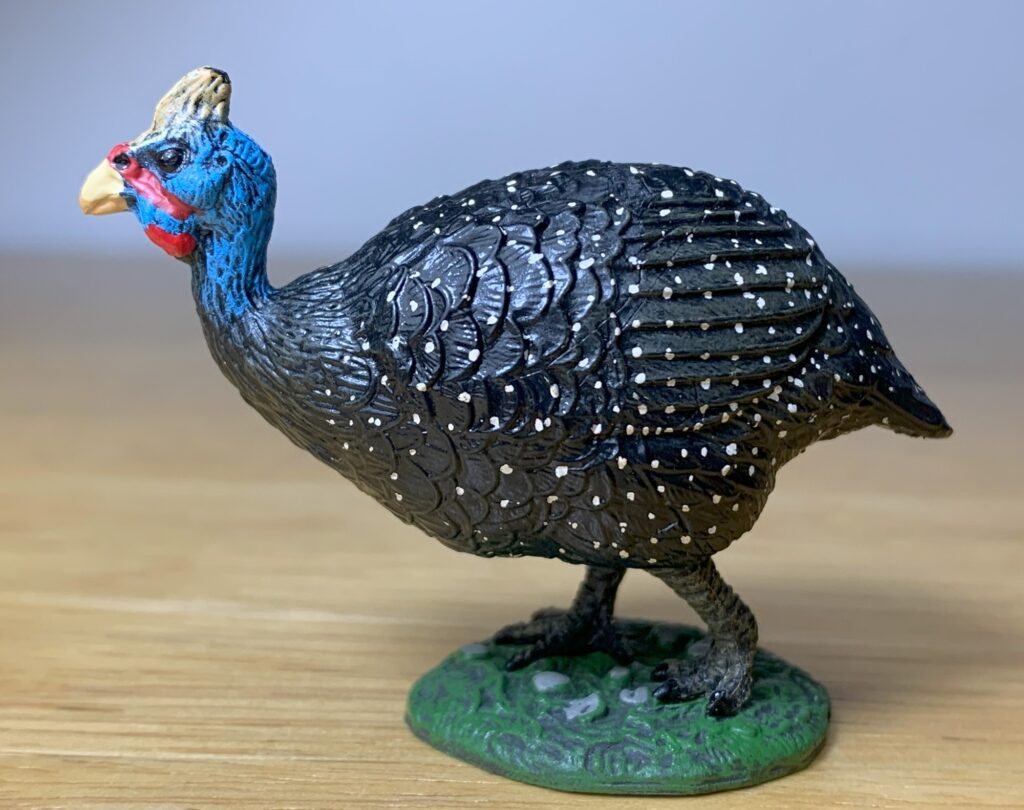
This figure specifically represents the helmeted guineafowl (Numida meleagris) which is native to sub-Saharan Africa but has been widely introduced outside its native range, with populations in Europe, Australia, and North and South America. You’ll notice that the species name is the same as the genus name for the wild turkey (Meleagris gallopavo). That’s because Europeans originally thought turkeys were guineafowl. Meleagris is Greek for guineafowl.
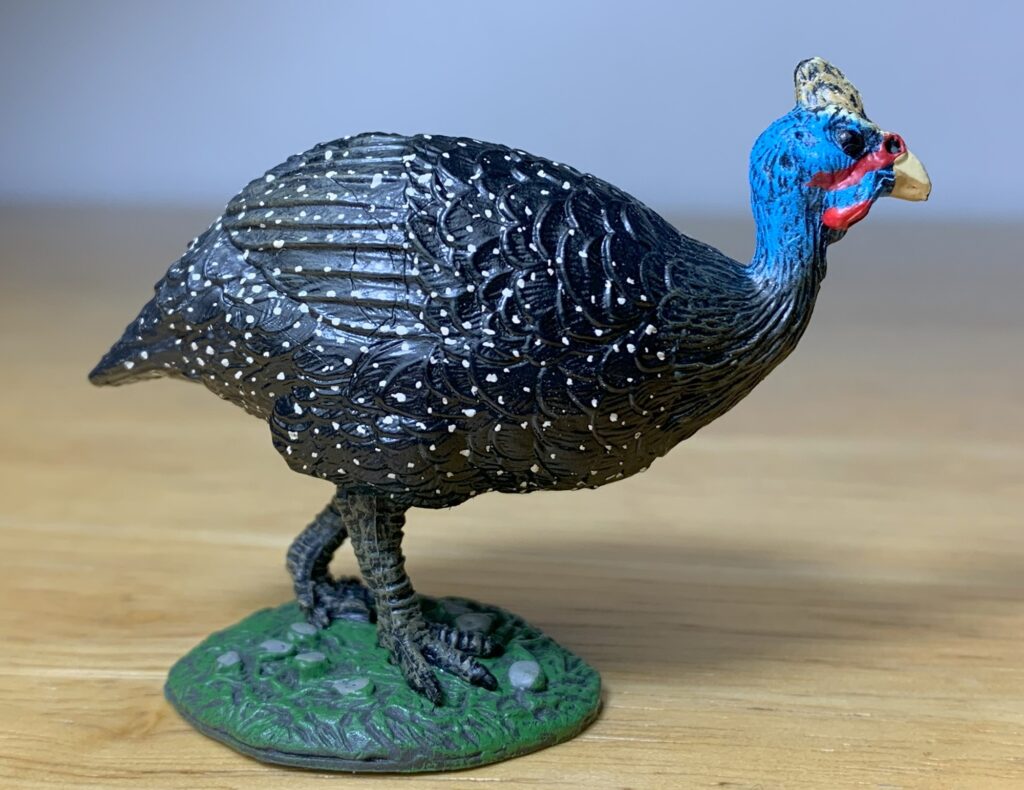
As suggested by Papo placing it in their Farm Animal line, helmeted guineafowl have been domesticated, with evidence for their domestication going as far back as the 5th century BC, in Greece. Guineafowl can be raised for meat or eggs but unlike chickens they are seasonal layers, tending to lay from April to October. Captive guineafowl are best utilized for pest control as they eat a wide variety of invertebrates, including wasps, flies, locusts, and scorpions but most importantly, ticks. They also serve as an effective early warning system against predators, with loud shrieking alarm calls that make guineafowl useful in mixed flocks with chickens and other fowl.
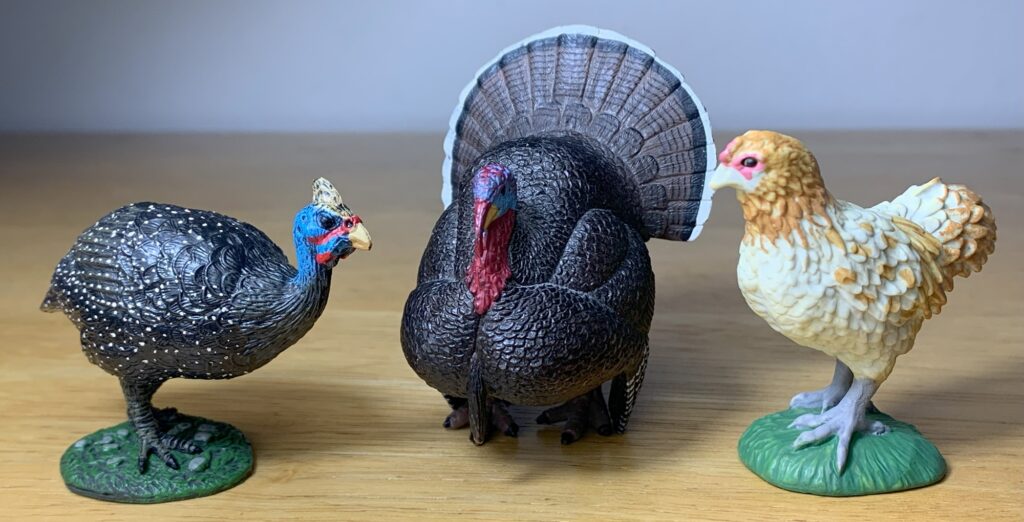
Helmeted guineafowl can weigh up to 2.9 lbs. (1.3 kg) and measure up to 23” (58 cm) in length. The Papo figure measures about 2.5” (6.35 cm) but when including the bend in the neck it comes out to be closer to 3” (7.62 cm), giving us a scale of 1/7.6. The figure is presented in mid-step and standing on a green grassy base with a scattering of gray pebbles.
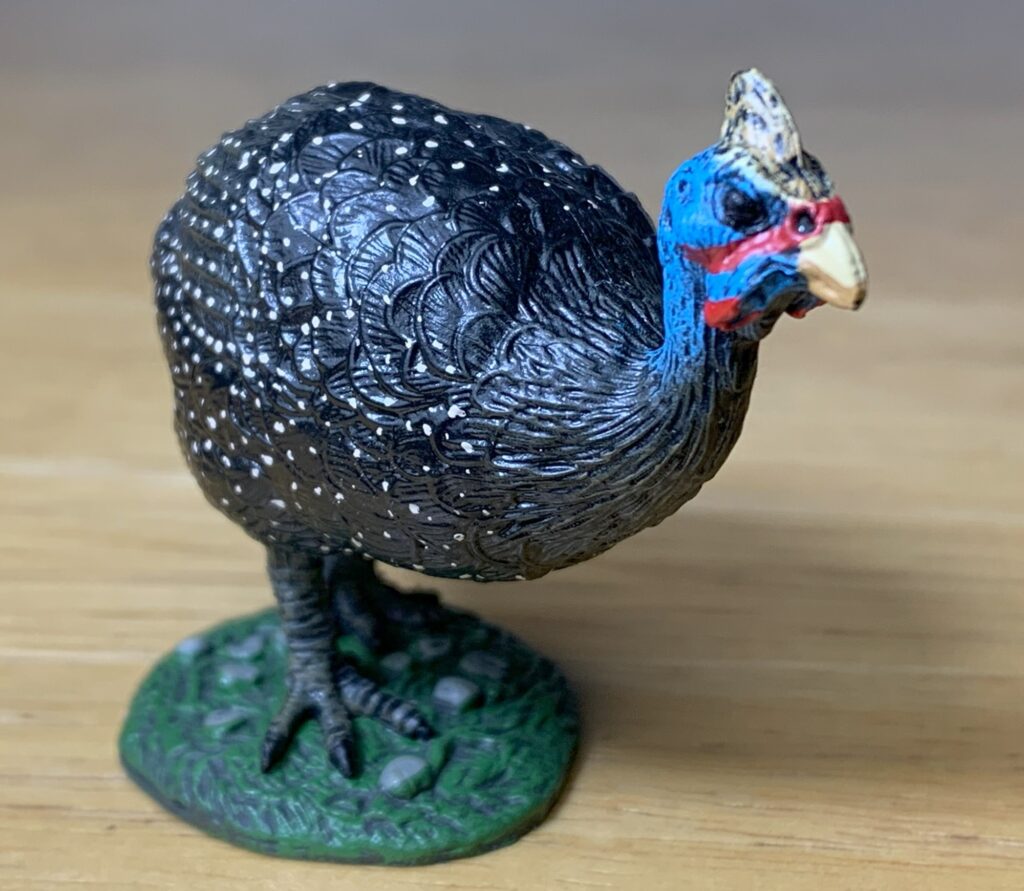
The figure well illustrates the small featherless head, plump body, and short tail of the helmeted guineafowl. Atop the head you’ll also notice the roughly textured casque that gives the species its name, which is used to display dominance and attract mates. Dominant males have the largest casques. The casque makes these primitive birds look like their even more primitive cousins, the oviraptorosaurs, and a bit like miniature cassowaries. Fine details include the bony knobs and fleshy bits that adorn the head, and visible ear openings and nostrils. The feather detail is exquisite but hard to appreciate under the paintjob. Scales on the feet are simple horizontal lines etched around them.
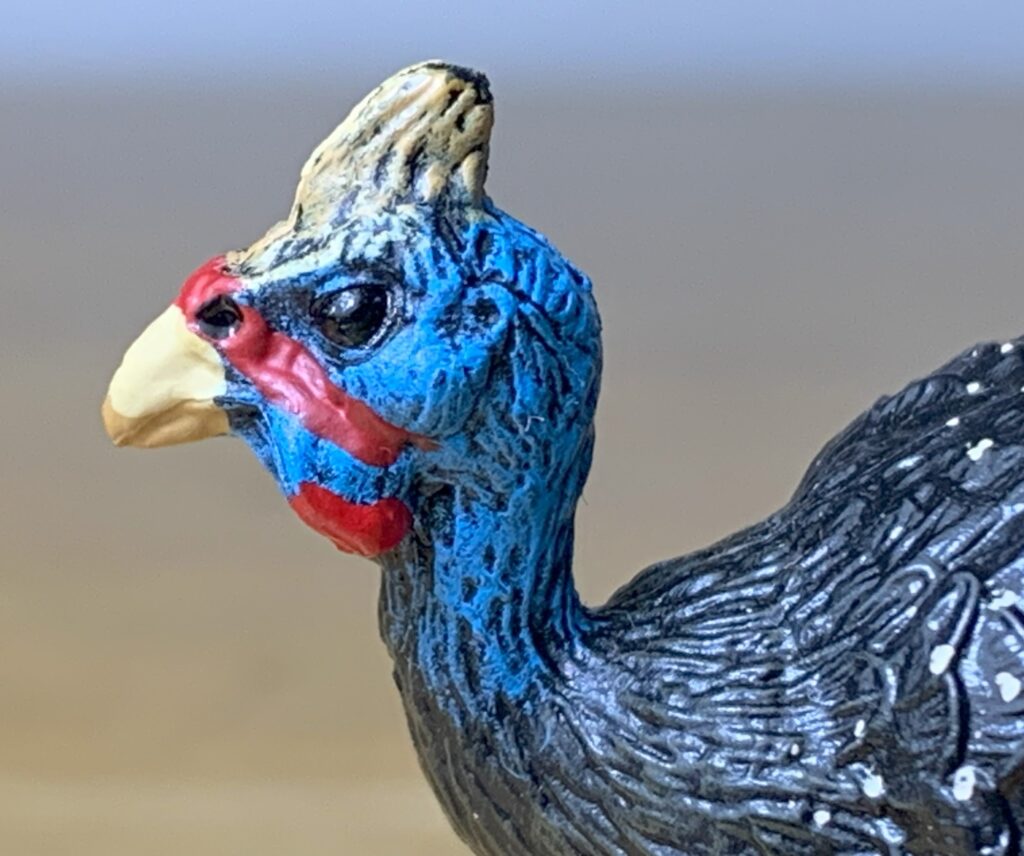
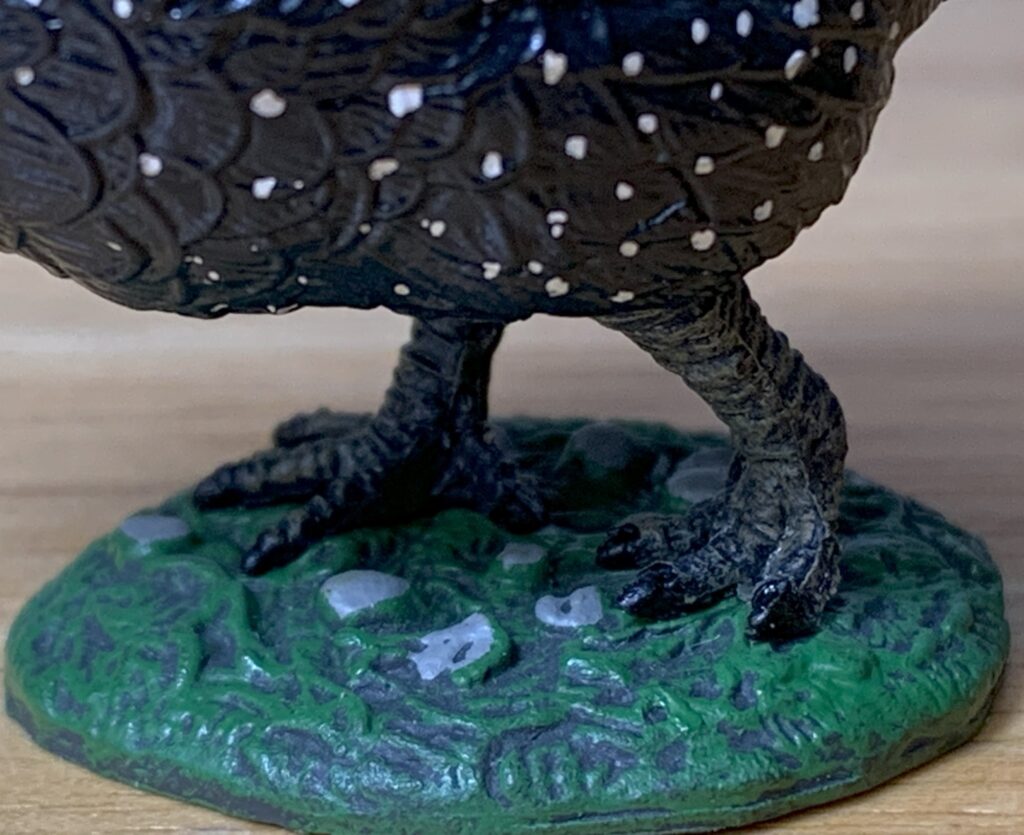
The plumage is painted black with white speckling, which is also the color of wild guineafowl. Domestic guineafowl come in a range of colors and I’m glad that Papo went with this one so that it can still represent a wild animal. The head and neck are painted blue and red, the casque is tan with a dark wash over it, the eyes are black, and the beak is dull yellow. The legs are gray with black nails. The paint application is excellent overall and particularly remarkable on the tiny head.
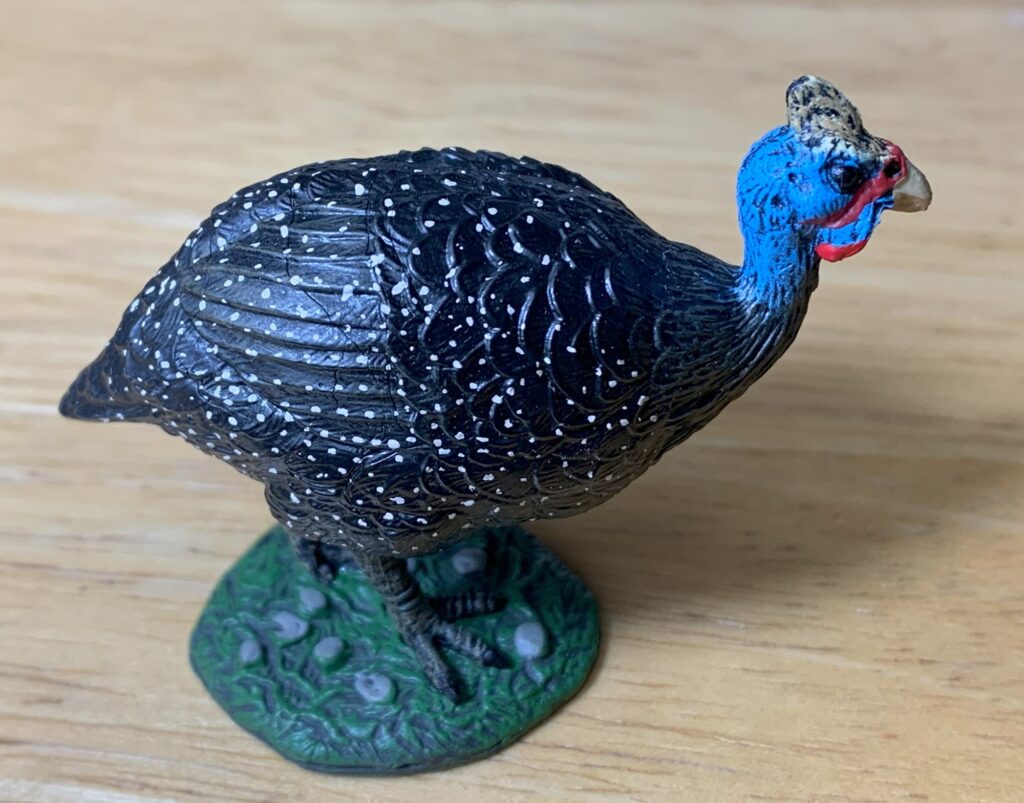
The Papo guineafowl is a must have in any respectable collection of bird figures and the first new guineafowl figure in over half a century! Why these unique, widespread, and agriculturally important birds aren’t popular as toys is anyone’s guess, but this figure should be well received, and it comes highly recommended from me. The Papo guineafowl can be purchased from Happy Hen Toys by clicking on the link below.
Disclaimer: links to Ebay and Amazon on the AnimalToyBlog are affiliate links, so we make a small commission if you use them. Thanks for supporting us!




